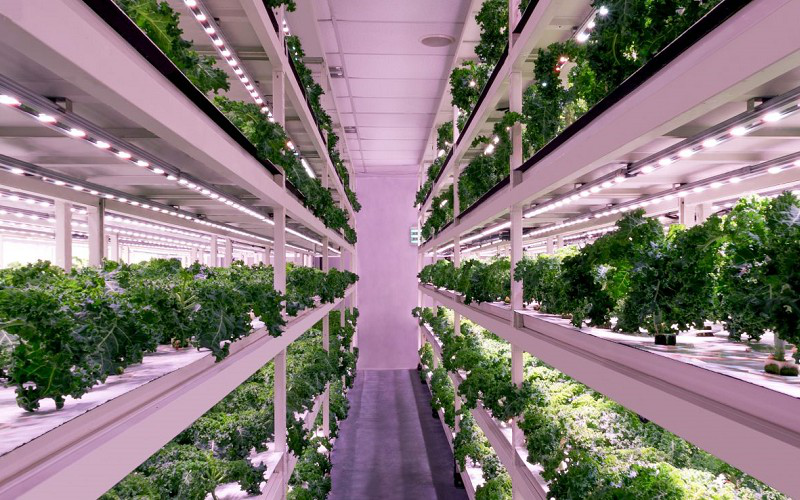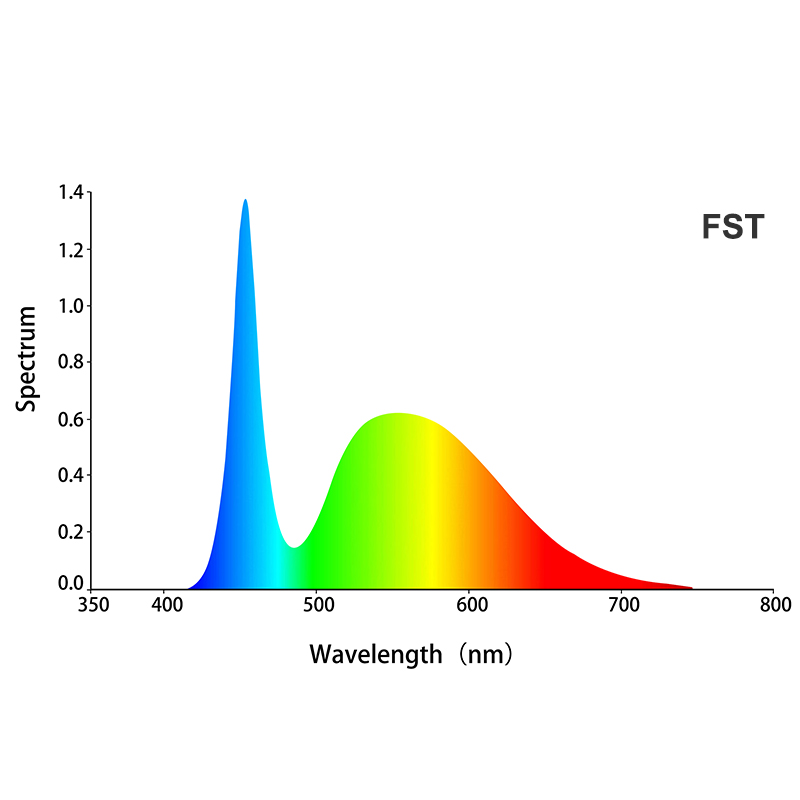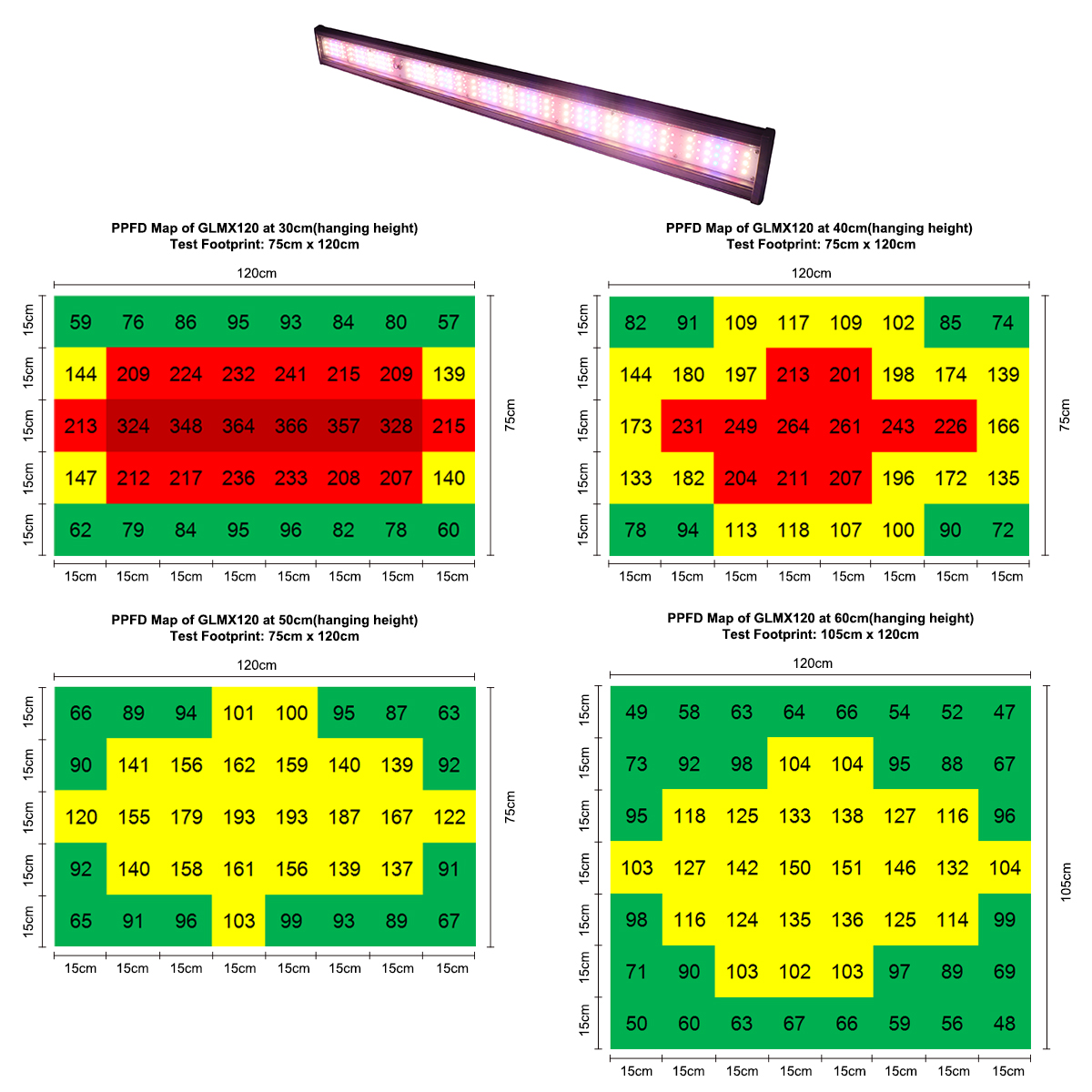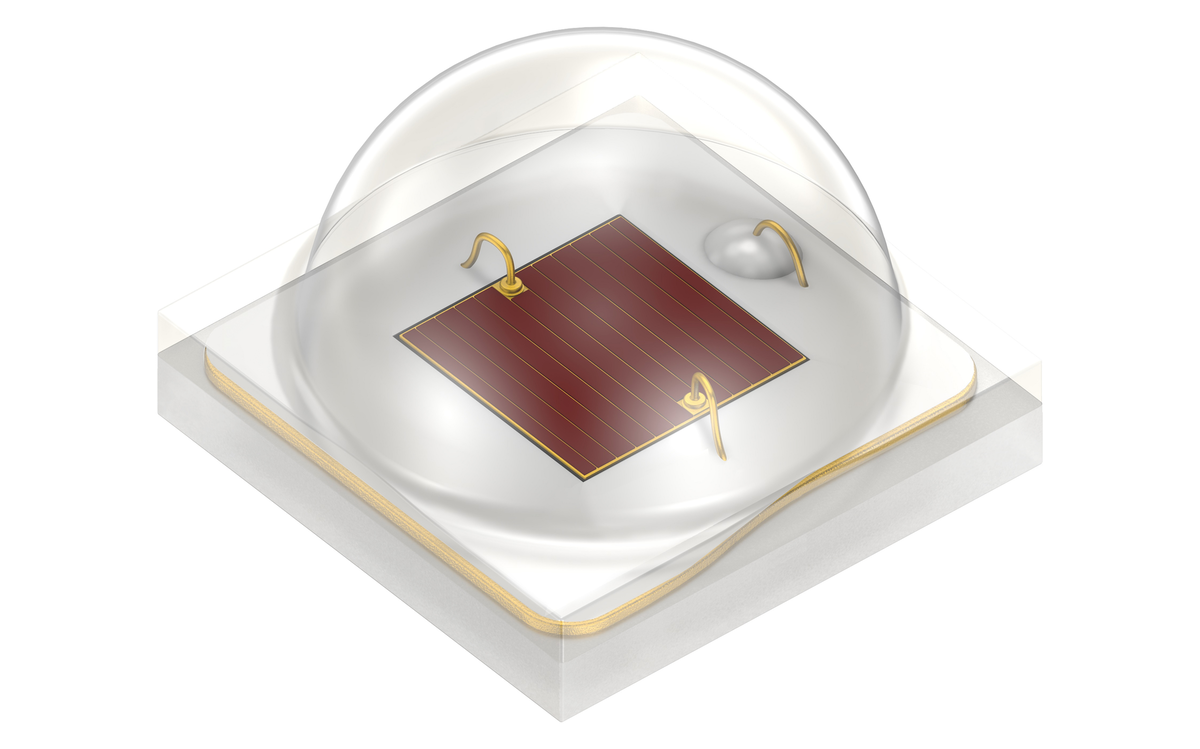Welcome~panamericanelectronics.Com Enterprise website
Writer:Jane Time:2020-10-05 Browse:114
In areas with high altitude, high latitude, lack of water resources, barren land, and high urbanization and dense population, plant growth factors such as effective light time, heat intensity, humidity and other aspects are affected, coupled with climate change, plant outdoor growth faces many difficulties.
This is why a plant's natural photosynthesis may not live up to growth expectations.
Therefore, this is why you should use LED plant growth lamps. First of all, LED planting lights are environmentally friendly and also the most important advantage. Fast start, low power consumption, and no flash are energy saving advantages.
Similarly, if LED plant growth lights are used, photosynthesis of plants will be enhanced. If conventional lighting does not, the growth rate of plants will increase. For example, the growth of spinach and radish will be improved, as will the morphological indicators.
Similarly, if your country is located in an area where winter is dominant, then LED plant growth lights can be very beneficial.
There are more advantages to using it. Here, I discuss with you how to use LED plant growth lamp as well as various other aspects of it. If you face these problems or want to learn more about them, please stay with me.
What is an LED plant lamp?

Without knowing what LED growth light is, the idea of using it cannot be realized. Therefore, LED plant lamps are mass produced lamps. They are energy saving and space saving plant growth lamps. LEDs have several applications.
Previously, LED lamps were used only for auxiliary lighting. Growers can use HID planting lights, but to get more power, if the plant needs extra light, we need to use LED planting lights.
With LED improvements, larger LED panels can provide light for the entire growth chamber. LEDs are not needed when other lighting systems require large ballasts and cooling systems. You can hang round or square or any other shaped panel over the plant.
LED plant lamp features
When you use an LED plant growth lamp, you should know what it does. So, here are some basic functions of LED lights:
Accurate wavelength output

Some people claim that plants cannot grow under LED lights. But now, with advances in the field and the discovery of blue LEDs, that view has changed.
For plants, specific wavelengths of light are necessary for photosynthesis and growth.
Scientific experiments have determined that red and blue wavelengths are the most important wavelengths. Shop lights or traditional LEDs do not emit the blue and red light that is essential for plant growth. These are specific to human vision.
Understand power (watt)
A watt is a measure of the energy input required for light. The output of the LED lamp depends not only on the function of the watt, but also on the quality of other components and designs. These components are:
1.LED chip quality
2. Lamp bead density
3.Optical design
4.The radiator
5.LED Driver Power Supply
The power increase reduces LED efficiency due to the temperature increase in the electronic circuit board. So when LED manufacturers claim that watts are a measure of a plant's ability to grow, it's questionable. Therefore, you need a lot of knowledge about wattage and PAR, and it must depend on the manufacturer's information.
Light intensity

If a light meter is available, light sources at different distances can be measured. You will then notice that the light intensity decreases as the distance between the light source and the illuminometer increases. You can understand the relationship between the physical laws of light intensity and the distance from the light source.
Manufacturers can position growth lamps higher above vegetation and illuminate large footprint areas. Then, if the LED emission is designed to be close to the plant, the output will be higher. The light intensity is lower at the edges.
The leaf tissue can touch the well-designed LEDs because they operate at a low enough temperature so that the tissue does not suffer any damage. So you can get these lights close to the plants. Light intensity is a limiting point, though, because too much burns plant tissue.
LED chip quality

Diodes should have specifications to emit actual wavelengths. Well-known manufacturers use a complex process that means their diodes will emit the right wavelengths of light. Other manufacturers also produce inexpensive LEDs to appeal to budget-conscious shoppers.
Cheap LEDs may not emit the specific wavelengths needed by plants, and the intensity of light may vary. The customer should be aware of these facts.
LED lens
The quality of the LED depends on the lens to which it is connected. Optical lenses can affect size and output. If the required footprint and appropriate intensity are not provided, the health of the plant will not be up to scratch. That's how you measure quality.
Why use LED plant lights?
Knowing the benefits of using something will give you insight into why you should use it. Let's take a look at the benefits of using LED plant growth lights:
Longer life
This is a significant advantage of LED plant growth lamps. These have an extended life of 50.000 to 100.000 hours, which means why it is necessary to use LED plant growth lamps continuously for five years or more. Before buying, check the specifications of this model and purchase a product with a service life of at least 50.000 hours.
These lamps have a lower energy consumption than regular lamps. The most unique thing about LED plant growth lights is that they give a warning before the power goes off. At its maximum life, some chips will dim, while others will emit less light.
That will give you time to make a replacement. A number of models are available for the replacement of a single chip.
Flexible features
You can use the LED plant growth lamp in any way that does not stop clapping. You can make use of these lights. Therefore, all gardeners like to use LEDs. Place the bulb and panel near the plant for maximum brightness.
Increase brightness
Normal plant light gives off more heat than light. Both are essential for plant growth, but limit the proportion. LED planting lights provide you with a balanced proportion of heat and light.
Because they are designed in such a way that they provide more light and less or optimal heat. In this regard, you should be aware that too much heat can affect the growth of the plant.
Efficient for growth
When plants get the best light, their growth will be accelerated. Adjusting the duration of daylight will increase growth even further. The results were significant in the horticultural field.
No ballast or reflector is required
Because LED growth lights do not require a ballast, they are lighter than normal growth lighting systems. You can put them into regular lamps, so you won't run into any problems. Since LEDs have their own mirrors, no additional mirrors are required.
Accurate spectral matching
When you grow plants in your home or outdoors using greenhouse technology, you need to check and control conditions.
In the study, we saw that when plants have a particular wavelength of light, they absorb up to 400-500 nm of chlorophyll, and the maximum absorption range is 600-700 nm. LED lights can meet this range.
How to use LED plant lamp?
The process of using LED plant growth lights is shown here. Follow the steps:
The first step:
Adjust the height of the lights hanging over the plants.
Early stage of plant growth - place the lamp about 300mm above the plant. Therefore, it ensures a minimum internode length and provides internode space.
Nutritional period - now increases the distance between the light and the plant, possibly between 300-600 mm. Plants with lots of leaves need to lower the light so that it can reach the lower branches of the plant. Also, if your factory requires high lighting levels, keep LEDs above 300 mm; If we need a lower lighting level, keep the LEDs above 600 mm.
Flowering, germinating - here you can also stay 300-600mm above the tree crown. But 400 millimeters is a favorable height above the canopy.
The second step:
Change the way you water. If you are new to using LEDs, watering may cause some problems.
The watering guide is mainly based on HPS lighting. In the process, evaporation occurs. That's why water is needed. However, when it comes to LED planting lights, watering or feeding is not an issue. So watering can be dangerous to plants.
Step 3:
Then the plants need to be fed. But that's not what you want. In the presence of LED growth lights, there are feeding specifications.
You will need to provide a 30% HPS light source for the plants. Add Cal-Mag when your plants are growing under LED lighting.
In hydroponic systems, evaporation is reduced, so you have to provide less nutrients.
Step 4:
In winter, you need to provide more heat in the room. This will promote the growth of the plant. The heat of the growing area is much lower than that of HPS illumination. Therefore, in winter, this may cause some problems, so if you use LED plant growth lights, you should pay attention to plants.
Special note
Install multiple lights simultaneously
LED plant growth lamps can produce target light output. This is possible through the use of optical elements. Therefore, you can focus on specific parts of the growth, so you can repeat for each part. If multiple parts are implemented, the plant will be protected. It will maximize light distribution and save money. A qualified lighting company can help you and will plan everything for you if you ask for it.
Set Light Cycle
The life cycle is crucial to the biological life of crops. Growers can manipulate it by increasing or decreasing the amount of light. Greenhouse growers can do this by using blackout curtains and extra lighting. During the growing phase of the plant, it takes about 18 hours of daylight a day. Nutritive crops receive 17 to 18 hours of light per day.
Light intensity
Adequate light levels for flowering are 400 and 700 uMoles/m-2s. Light should be evenly distributed across the tree canopy. Since the illumination of the LED plant growth lamp is directional, please pay attention to it. Light less than 10 inches may cause bleaching.
SOG and SCROG techniques will help create a corolla depth between 12 "and 16" and light will reach all locations. If any flowers fall below this level, prune them at the end of the second week. By the fourth week, remove all the large fan blades so that they can be photographed. Ensuring that the light path is consistent is critical.
The temperature
78F is the best appreciated temperature for any plant. Then the CO2 level should be 360 PPM. You should monitor the root zone temperature. Air temperatures above 85°F require cooler dark period air temperatures.
Nutrients
As the temperature increased, the nutrient concentration in the dry area also increased. It can produce toxic levels in the root area. Therefore, reduce nutrient concentrations by 25-30%.
Security measures
1.Wear goggles when using equipment in greenhouses, as some of the light gives off ultraviolet rays.
2. Working under LED lights for any length of time can protect the skin.
3.If the surface is too hot, increase the distance between the LED lamp and the surface. For low power systems, a difference of 2 to 3 feet between the lights and the top of the plant is fine. High-power systems require 4 to 6 feet.
4.Wires and fixtures should be kept away from the irrigation system.
5.If you prefer to use fluorescent bulbs, choose a growing bulb without any toxic coating. Therefore, there is no chemical hazard due to rupture.
6.Install lights correctly with protective mirrors to minimize the risk of toxic substances such as mercury.
Often ask questions
Should you keep the lights on at all times?
It depends on the stage of growth. During the growing phase of the plant, 24-hour lighting does not cause any problems. But in the flowering or fruiting phase of a hydroponic tent FAQ, you need 12 hours of light.
Will regular LED lights produce the same results?
Yes, but it wasn't a wise decision. After good soil, light quality will be the most important investment.
Can you invest in dimmers to adjust the spectrum?
For dimmable lights, there is no need to adjust the height, which is the main purpose of using it. The dimmer series includes vegetable dimmer and generous dimmer.
Final Thoughts
In today's climate change, growing plants is a great job. So you can contribute to protecting the environment by making it greener. So a comprehensive understanding of growth is essential. In addition, in a given season, the intensity of light may be different than before.
As a result, the plant or crop you previously produced must be modified and production is impeded. With all this in mind, LED growth light investment is the best choice. Well, people may use it unwisely, but it's sure to become one of the most common soon.
If you read this article, you'll see why. With so many advantages, you will find no other. Using LEDs saves money and strength. Therefore, if you are a grower, now is the time to invent LED Grow lights.
Tel: +86 0769 38930008
Phone:+86 13267401690
Mail:Vipmanager@panamericanelectronics.com
Add: Building 6, Zhongtang Tian'an Digital City, No. 88, Jinyuan Road, Zhongtang Town, Dongguan City, Guangdong Province,China